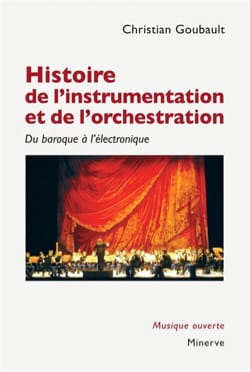Histories of instrumentation in French are rare, despite the importance acquired over the centuries by the orchestration.
This work travels a long route from the Middle Ages of the Renaissance and Baroque music, focusing on highlighting the particularities, the continuities as ruptures.
The orchestration then becomes an autonomous art with Haydn and Mozart, largely glimpsed and prepared by musicians like Vivaldi, Rameau, Handel, Bach, by the Schools of Mannheim and Vienna.
The path is then traced by goldsmiths in the field, with the great figures of Beethoven and Berlioz.
The first part of the twentieth century is experimenting with other ways, from Debussy's sonic thought to the Klangfarbenmelodie des Viennois. Drums are real orchestras. New instruments appear, using electronics, such as waves and synthesizers, allowing mixed scores.
This book would be incomplete if the technique of classical orchestration was not discussed: balance between the desks, divisi strings, instrumental combinations, special effects ... The problem of transcriptions and reorchestrations is also posed, through a multitude of arrangements.
Finally, among more than a thousand works cited, a selection of short scores, from Bach to Messiaen, is analyzed and commented to better understand the orchestration.
 |